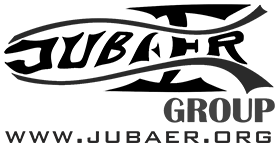Computer animation is the process used for digitally generating animated images. The more general term computer-generated imagery (CGI) encompasses both static scenes and dynamic images, while computer animation only refers to moving images. Modern computer animation usually uses 3D computer graphics, although 2D computer graphics are still used for stylistic, low bandwidth, and faster real-time renderings. Sometimes, the target of the animation is the computer itself, but sometimes film as well.
Computer animation is essentially a digital successor to stop motion techniques, but using 3D models, and traditional animation techniques using frame-by-frame animation of 2D illustrations. Computer-generated animations are more controllable than other, more physically based processes, like constructing miniatures for effects shots, or hiring extras for crowd scenes, because it allows the creation of images that would not be feasible using any other technology. It can also allow a single graphic artist to produce such content without the use of actors, expensive set pieces, or props. To create the illusion of movement, an image is displayed on the computer monitor and repeatedly replaced by a new image that is similar to it but advanced slightly in time (usually at a rate of 24, 25, or 30 frames/second). This technique is identical to how the illusion of movement is achieved with television and motion pictures.
For 3D animations, objects (models) are built on the computer monitor (modeled) and 3D figures are rigged with a virtual skeleton. For 2D figure animations, separate objects (illustrations) and separate transparent layers are used with or without that virtual skeleton. Then the limbs, eyes, mouth, clothes, etc. of the figure are moved by the animator on key frames. The differences in appearance between key frames are automatically calculated by the computer in a process known as tweening or morphing. Finally, the animation is rendered.
For 3D animations, all frames must be rendered after the modeling is complete. For 2D vector animations, the rendering process is the key frame illustration process, while tweened frames are rendered as needed. For pre-recorded presentations, the rendered frames are transferred to a different format or medium, like digital video. The frames may also be rendered in real time as they are presented to the end-user audience. Low bandwidth animations transmitted via the internet (e.g. Adobe Flash, X3D) often use software on the end-user’s computer to render in real time as an alternative to streaming or pre-loaded high bandwidth animations.
Explanation
To trick the eye and the brain into thinking they are seeing a smoothly moving object, the pictures should be drawn at around 12 frames per second or faster. (A frame is one complete image.) With rates above 75-120 frames per second, no improvement in realism or smoothness is perceivable due to the way the eye and the brain both process images. At rates below 12 frames per second, most people can detect jerkiness associated with the drawing of new images that detracts from the illusion of realistic movement. Conventional hand-drawn cartoon animation often uses 15 frames per second in order to save on the number of drawings needed, but this is usually accepted because of the stylized nature of cartoons. To produce more realistic imagery, computer animation demands higher frame rates.
Films seen in theaters in the United States run at 24 frames per second, which is sufficient to create the illusion of continuous movement. For high resolution, adapters are used.
Animation methods
In most 3D computer animation systems, an animator creates a simplified representation of a character’s anatomy, which is analogous to a skeleton or stick figure. They are arranged into a default position known as a bind pose, or T-Pose. The position of each segment of the skeletal model is defined by animation variables, or Avars for short. In human and animal characters, many parts of the skeletal model correspond to the actual bones, but skeletal animation is also used to animate other things, with facial features (though other methods for facial animation exist). The character “Woody” in Toy Story, for example, uses 700 Avars (100 in the face alone). The computer doesn’t usually render the skeletal model directly (it is invisible), but it does use the skeletal model to compute the exact position and orientation of that certain character, which is eventually rendered into an image. Thus by changing the values of Avars over time, the animator creates motion by making the character move from frame to frame.
There are several methods for generating the Avar values to obtain realistic motion. Traditionally, animators manipulate the Avars directly. Rather than set Avars for every frame, they usually set Avars at strategic points (frames) in time and let the computer interpolate or tween between them in a process called keyframing. Keyframing puts control in the hands of the animator and has roots in hand-drawn traditional animation.
In contrast, a newer method called motion capture makes use of live action footage When computer animation is driven by motion capture, a real performer acts out the scene as if they were the character to be animated. His/her motion is recorded to a computer using video cameras and markers and that performance is then applied to the animated character.
Each method has its advantages and as of 2007, games and films are using either or both of these methods in productions. Keyframe animation can produce motions that would be difficult or impossible to act out, while motion capture can reproduce the subtleties of a particular actor. For example, in the 2006 film Pirates of the Caribbean: Dead Man’s Chest, Bill Nighy provided the performance for the character Davy Jones. Even though Nighy doesn’t appear in the movie himself, the movie benefited from his performance by recording the nuances of his body language, posture, facial expressions, etc. Thus motion capture is appropriate in situations where believable, realistic behavior and action is required, but the types of characters required exceed what can be done throughout the conventional costuming.
Modeling
3D computer animation combines 3D models of objects and programmed or hand “keyframed” movement. These models are constructed out of geometrical vertices, faces, and edges in a 3D coordinate system. Objects are sculpted much like real clay or plaster, working from general forms to specific details with various sculpting tools. Unless a 3D model is intended to be a solid color, it must be painted with “textures” for realism. A bone/joint animation system is set up to deform the CGI model (e.g., to make a humanoid model walk). In a process known as rigging, the virtual marionette is given various controllers and handles for controlling movement. Animation data can be created using motion capture, or key-framing by a human animator, or a combination of the two.
3D models rigged for animation may contain thousands of control points — for example, “Woody” from Toy Story uses 700 specialized animation controllers. Rhythm and Hues Studios labored for two years to create Aslan in the movie The Chronicles of Narnia: The Lion, the Witch and the Wardrobe, which had about 1,851 controllers (742 in the face alone). In the 2004 film The Day After Tomorrow, designers had to design forces of extreme weather with the help of video references and accurate meteorological facts. For the 2005 remake of King Kong, actor Andy Serkis was used to help designers pinpoint the gorilla’s prime location in the shots and used his expressions to model “human” characteristics onto the creature. Serkis had earlier provided the voice and performance for Gollum in J. R. R. Tolkien’s The Lord of the Rings trilogy.
Facial animation
The realistic modeling of human facial features is both one of the most challenging and sought after elements in computer-generated imagery. Computer facial animation is a highly complex field where models typically include a very large number of animation variables. Historically speaking, the first SIGGRAPH tutorials on State of the art in Facial Animation in 1989 and 1990 proved to be a turning point in the field by bringing together and consolidating multiple research elements and sparked interest among a number of researchers.
The Facial Action Coding System (with 46 “action units”, “lip bite” or “squint”), which had been developed in 1976, became a popular basis for many systems. As early as 2001, MPEG-4 included 68 Face Animation Parameters (FAPs) for lips, jaws, etc., and the field has made significant progress since then and the use of facial micro-expression has increased.
In some cases, an affective space, the PAD emotional state model, can be used to assign specific emotions to the faces of avatars. In this approach, the PAD model is used as a high level emotional space and the lower level space is the MPEG-4 Facial Animation Parameters (FAP). A mid-level Partial Expression Parameters (PEP) space is then used to in a two-level structure – the PAD-PEP mapping and the PEP-FAP translation model.
Realism
Realism in computer animation can mean making each frame look photorealistic, in the sense that the scene is rendered to resemble a photograph or make the characters’ animation believable and lifelike. Computer animation can also be realistic with or without the photorealistic rendering.
One of the greatest challenges in computer animation has been creating human characters that look and move with the highest degree of realism. Part of the difficulty in making pleasing, realistic human characters is the uncanny valley, the concept where the human audience (up to a point) tends to have an increasingly negative, emotional response as a human replica looks and acts more and more human. Films that have attempted photorealistic human characters, such as The Polar Express, Beowulf, and A Christmas Carol have been criticized as “creepy” and “disconcerting”.
The goal of computer animation is not always to emulate live action as closely as possible, so many animated films instead feature characters who are anthropomorphic animals, legendary creatures and characters, superheroes, or otherwise have non-realistic, cartoon-like proportions. Computer animation can also be tailored to mimic or substitute for other kinds of animation, like traditional stop-motion animation (as shown in Flushed Away or The Lego Movie). Some of the long-standing basic principles of animation, like squash & stretch, call for movement that is not strictly realistic, and such principles still see widespread application in computer animation.




